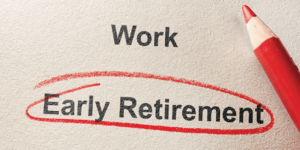Avoiding the Big “No-No’s” in Retirement Planning
Retirement is just as much a leap of faith as any other significant life change. No matter how much you prepare, you will only really understand all the implications when you start your new life. That’s one reason we believe that the first requirement of a good retirement plan is for it to be living & breathing. Meaning, as life changes, or the world changes, you’re able to adapt and have confidence regardless of the news cycle. What makes sense today, might not make sense in 20 years.
But, how do we get to maximum flexibility? It starts with avoiding any big “No-No” retirement risks. The more your plan is set up to accommodate major events or situations, whether predictable or unpredictable, the greater your ability to adjust to those changes.
Making Sure You Don’t Outlive Your Money
According to the Social Security Administration, the average life expectancy for a man reaching age 65 in 2023 is just over 84 years. For a woman, it is almost 87 years. A twenty-year retirement is the norm now, and for many people, it can be a decade or more longer than that.
Expenses in retirement are often high during the early, active years. In the middle years of retirement, expenses may drop. But longer life expectancy often means increased expenses in the last years of retirement to pay for health care. Returning to our 65-year-old couple above, Fidelity estimates that healthcare expenses may be approximately $315,000 throughout their retirement – over and above Medicare. One of the biggest retirement mistakes, is simply ignoring potential expenses that may come down the road.
But, how do you mitigate this longevity risk? It comes down to three things:
· Keep a careful eye on expenses and update budgets regularly
· Ensure the age you take Social Security is fully optimized
· Invest with a “Bucket” strategy for short-term, mid-term, and long-term needs. This allows you to keep capital growing for long-term needs and to ensure you have what you need in the short term without liquidating investments at a potential loss.
Keeping an Eye on Inflation – But Not Too Close
The high levels of inflation we’ve seen in the last couple of years are hitting everyone’s wallet. But taking a longer view, over the previous 50 years to 2021, inflation has averaged about 3.8% annually. The stated goal of the Federal Reserve is for inflation to remain around 2% annually.
Building an income strategy around today’s high inflation could result in taking too much income out of your plan in the early years. It’s also a good idea to go beyond the statistics and consider how inflation affects you. High inflation rates aren’t as much of a threat for many retirees. Social security is indexed to inflation, so some income will keep pace. Retirees also may have a smaller outlay on things impacted by inflation than people still in their working years.
Include a modest assumption for inflation in your income planning, and for temporary spikes, some remedial budget-cutting is probably enough to keep you on track.
Paying Attention to Your Taxes
You’ll be in a lower tax bracket in retirement, right? Well, maybe. You don’t have the same deductions as when you were working, and once you hit 73, required minimum distributions (RMDs) turn your tax-advantaged savings in 401(k)s and Traditional IRAs into big chunks of taxable income. Even worse, if your income gets too high, you may end up paying a tax on Medicare through the IRMAA, which kicks in at higher income levels.
You don’t have to give up control of your income if you plan ahead. You can deploy several tax strategies, particularly in the early years of retirement, or the years leading up to it. One of the most advantageous is a Roth conversion, which allows you to take money from your tax-efficient accounts over the course of several years when your income is low, pay the taxes in those low income-tax years, and then reinvest in a Roth account. However, this might not make sense for a lot of retirees and is a case-by-case strategy.
The key is being proactive. You want to ensure you don’t outlive your assets, but also aren’t too conservative and lose to inflation. Building out “guard-Rails,” to figure out what minimum or maximum spending you can sustain, and also being cognizant of potential health expenses. Even more so, you want to be making sure you’re able to adapt to any changes that could arise over a 20 or 30 year retirement. What’s not included in this blog, is the estate ramifications for your next generation, but that is something to understand and be aware of as well.
The Bottom Line
Retirement changes your mindset from being a saver to essentially a spender as you begin to live on the nest egg you accumulated. You won’t have income from work, but you will have more freedom. For many retirees, the newfound freedom opens new doors, as well as worries. Ensuring you can make your retirement assets match your retirement lifestyle means mitigating the risks, but also being tactical and proactive.







